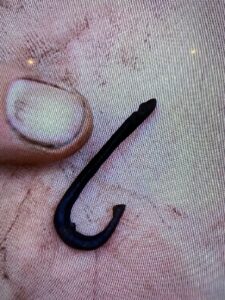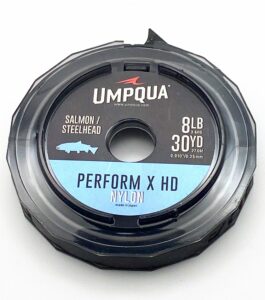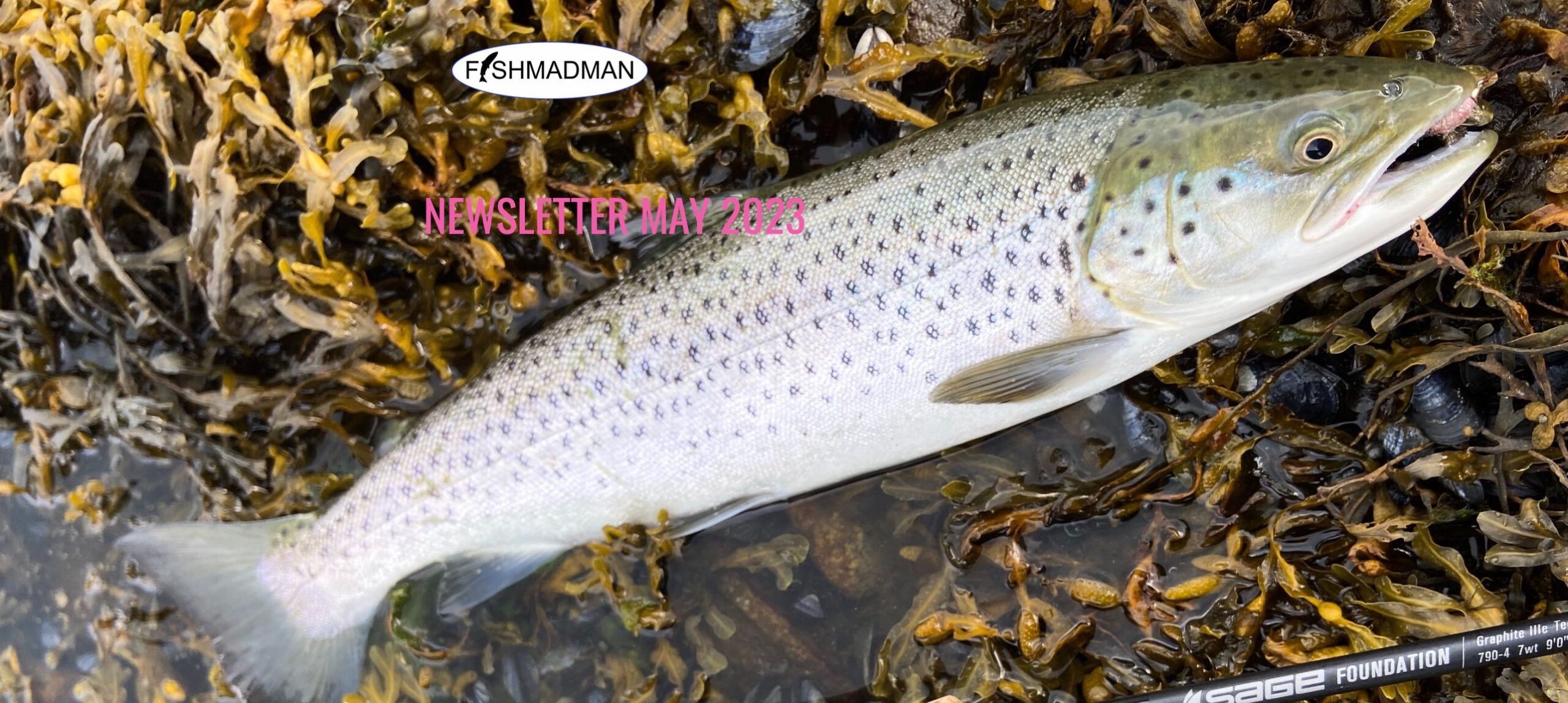
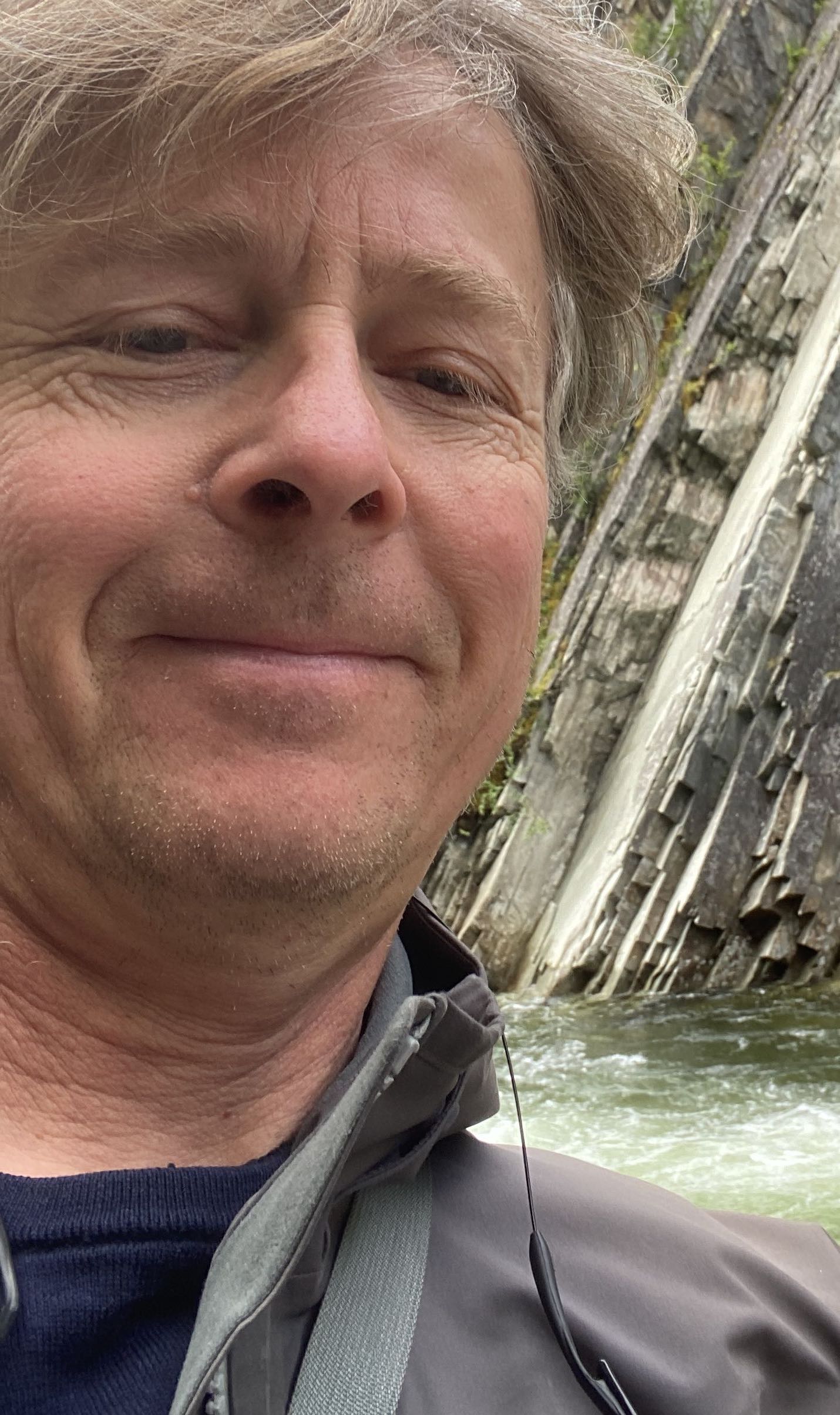
Dear topwater anglers…the Salmon season is close by, and that is truly something to get excited about
This time our newsletter will be about climate changes, how they may affect your fishing … and how you could use them progressively.
Tight lines from us at Fishmadman:
Las, Per & jesper
Newsletter this time
- The climate is changing – so is fishing for salmon
- A new range of tiny Island favourite flies
- A couple of old hooks
- New tippet material for your summer
- New plans for 2023
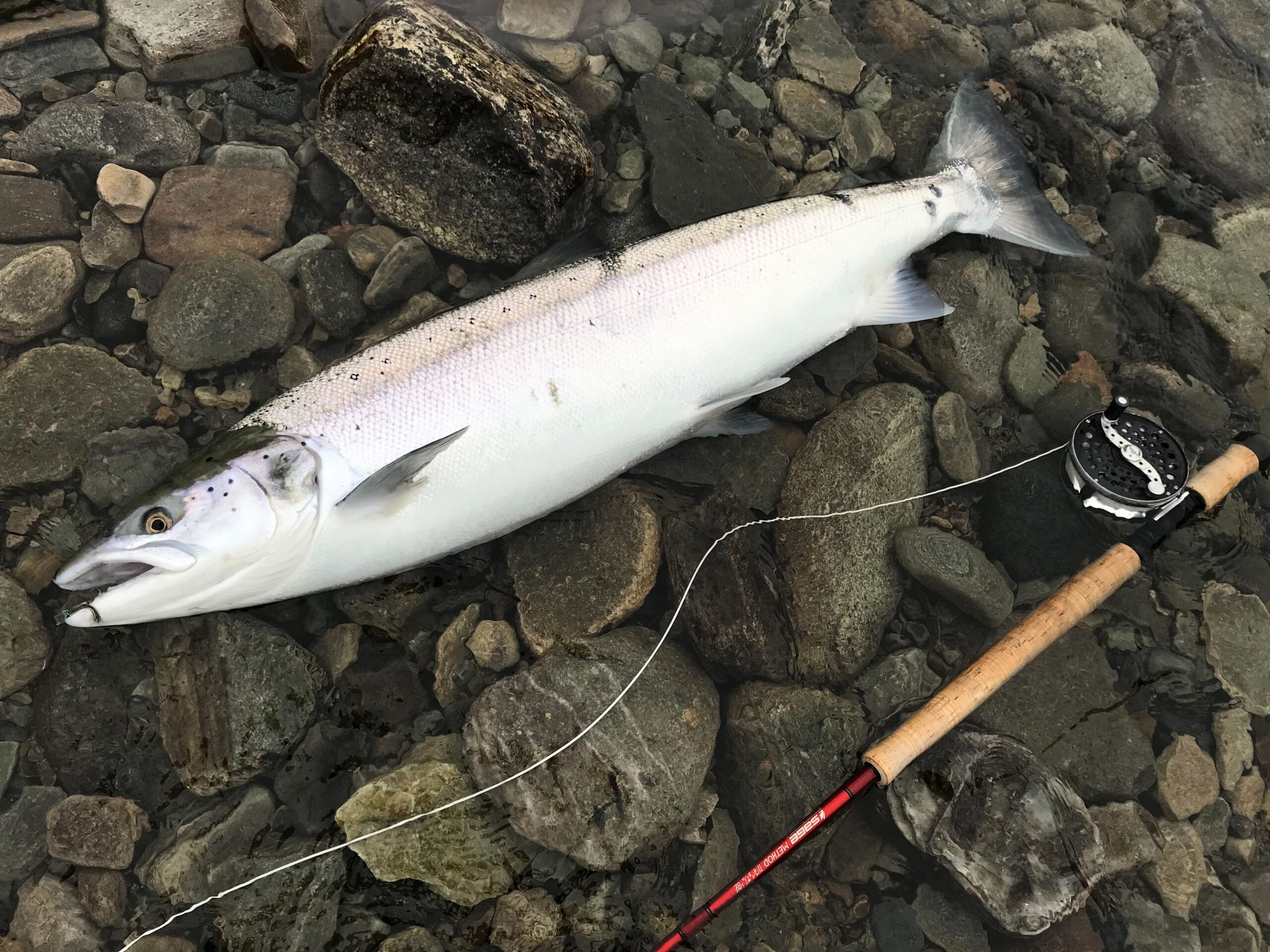
Fresh from the sea… caught on a hitch fly in shallow water in early July. Salmon fly fishermen must adapt to the new challenges and fishing methods if they want to be effective throughout the season.
The climate is changing, and so is fishing for salmon. The last decade has been unusual with radical weather changes, and dry and hot summer weather has been dominant in large parts of the north – 2022 was no exception and rivers in the north saw weeks without rain – and again the season brought new challenges – or opportunities.
Weather conditions in the Nordic countries, Ireland and Scotland, are becoming similar to those we can experience in areas of North America, where east-facing rivers run in a landscape that in many ways resembles Norway, or rather Switzerland, which precisely shares a latitude with both Newfoundland and the rivers where Atlantic salmon run in Canada.
The summer rivers in Newfoundland and Canada can quickly run both warm and shallow, and it is in such conditions that salmon anglers do their fly fishing. It is not without reason that fly fishing with micro wet flies, riffling hitch, and dry flies is popular in North America. Such flies are just better to trick salmon with than trying to deceive them with a traditional wet-fly fished below the surface – when the river temperature fluctuates past 16 – 19 degrees Celsius.
micro flies, riffling hitch and dry flies is popular among fly fishermen in North America, these types of flies are simply easier to trick salmon with than trying to deceive them with a traditional wet-fly fished below the surface
Learn more about riffling hitch technique and the tackle to use

Rivers with clear water
Fly fishing in Iceland is quite extraordinary. In many cases, the rivers in Iceland work like rivers in the far north of Norway: clear, shallow rivers with relatively cold water.
Europeans and Americans travel to Iceland to experience the fantastic fishing opportunities for salmon, char and trout. Many of the fly patterns that are favourite patterns in Iceland are also favourite flies for the rivers in Finnmark and Troms.
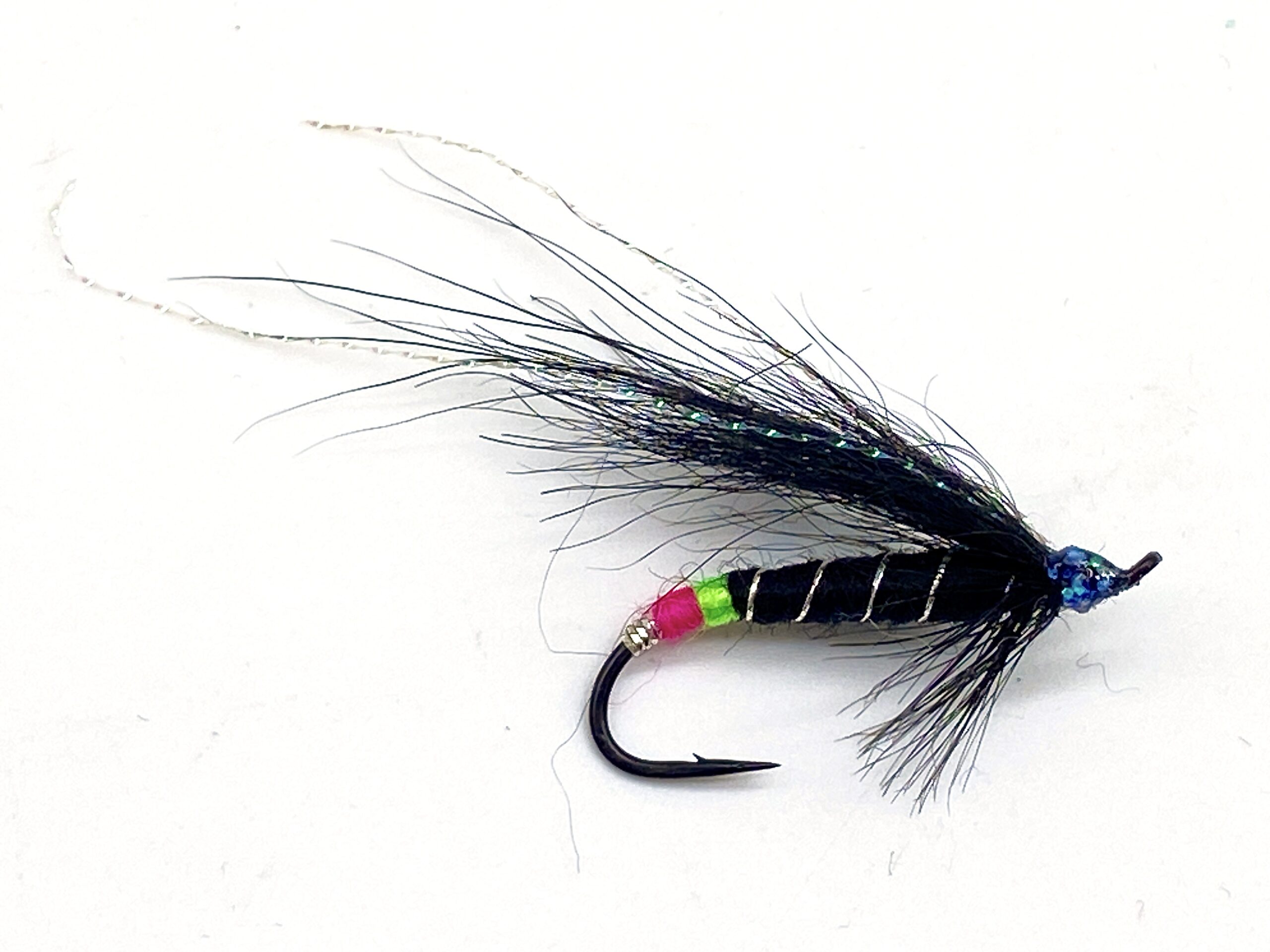
The Undertaker – A famous salmon pattern from the 1970s
The Undertaker as a pattern comes from an unknown angler fishing the Nashwaak River, later the fly pattern was popularized by master fly tier Mr Warren Duncan in Sct John (New Brunswick)
Once you get to know the Undertaker, you know you can’t be without this fly in your box – We do this fly in two sizes: 8 -10 single low-water Partridge hooks.
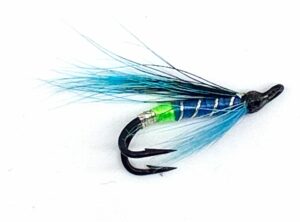
The Laxá Blá – A famous salmon pattern from Iceland
The Laxa Bla is a salmon fly pattern that is attributed to a Mr by Þórður Péturson.
A lightly dressed hair wing fly that makes an excellent presentation in fast glides and shallow clear water. We do it in sizes 10 – 12 on double Partridge low-water hooks.
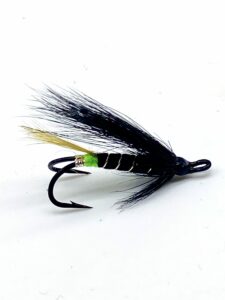
Black Bear Green Butt is a famous salmon pattern from the 1920s
The Black Bear Green butt is a variation of the famous 1920s Black Bear salmon fly pattern devised by Harry Smith of Cherryfield, Maine. Originally the Black Bear was tied with hair from a black bear, and we do it with hair from a natural black squirrel.
The Black Bear Green Butt is also known as the Conrad on the Miramichi River and is also a salmon fly pattern that relates to other fly patterns like the Preacher and Undertaker. We do it in sizes 10 – 12 on double Partridge low-water hooks.
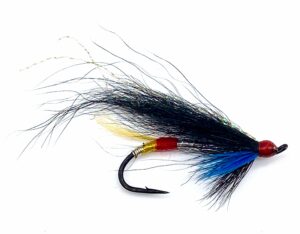
A famous salmon fly pattern from the 1880s
The Night Hawk is an 1880s salmon fly pattern that originates from Canada. This salmon fly pattern is credited to Mr Stanford White. Originally the Night Hawk was tied with black feathers from Turkey. We make this pattern in sizes: 8 -10, single low water Partridge hooks.
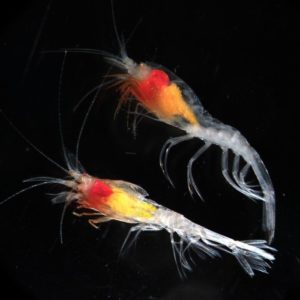
Bright butts on salmon and steelhead fly – why?
Maybe the bright colours in crustation, like the Hymenodora and the krill, make some of these fly patterns with clear bright butts so efficient.
See our page on what salmon eat at sea.
A couple of old hooks
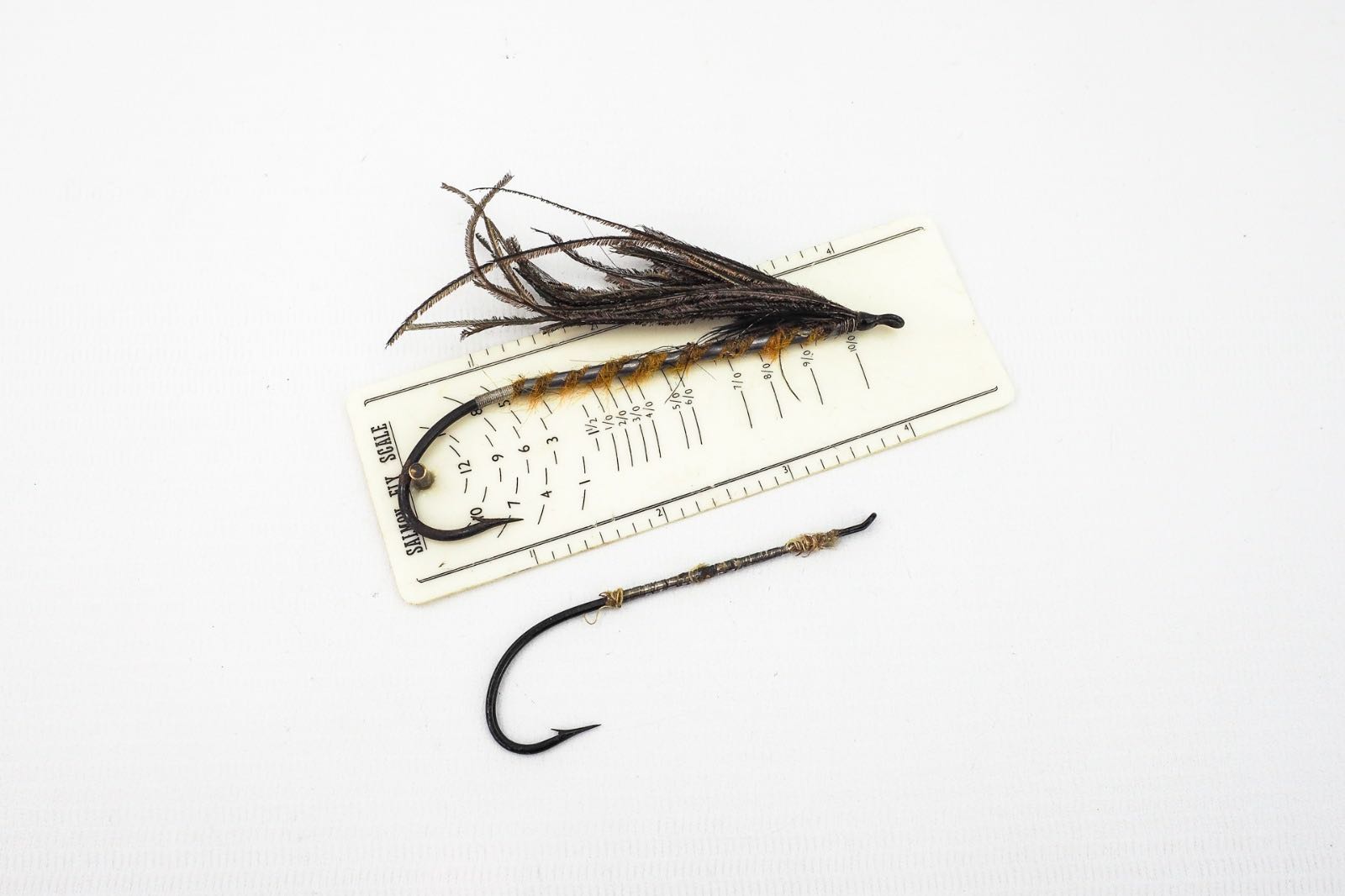
What must be the most oversized salmon fly hooks I have yet seen?
Photo kindly supplied to us by fishing friend Mr Aaron Day.
The hook is right out of the salmon hook scale and is probably size 11/0 – The hook below it is a 9/0 salmon fly hook.
And a really old one
6000 – 7000-year-old fishing hook found a few kilometres from where I live near the town Paarup, by a lucky archaeologist from Museum Nordsjælland
You know this could also be a fly fishing hook (:
What are we working on?
TDF BUGS
We are working to make a series of the most wanted sunken bugs for sea trout fishing in Argentina’s Tierra del Fuego region. Strong hooks, girdle legs, bright and dull colours – Here are some we already do for anglers targeting sea trout (sea run brown trout) in the Gaula and Stjørdal Rivers in Mid Norway.
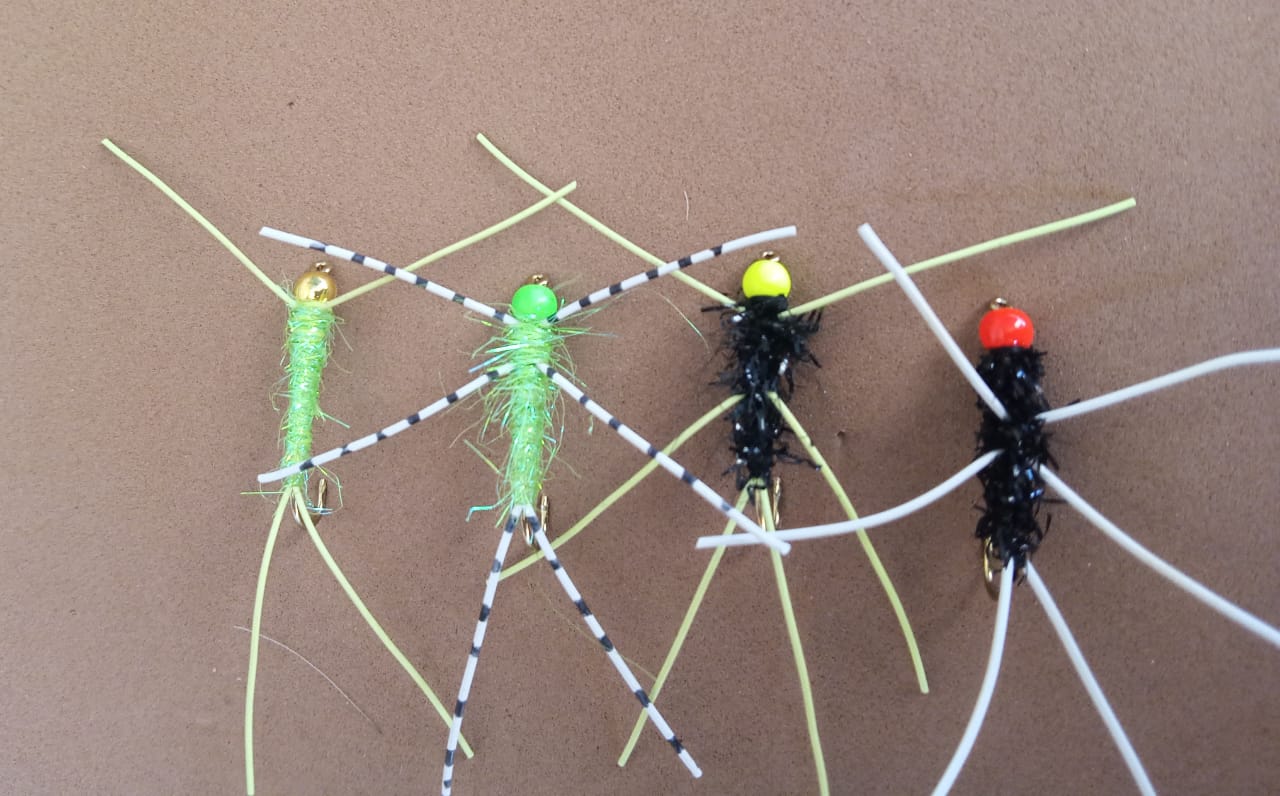

On that note… we would like to share this magnificent image of one of them, TDF sea run brown trout (sea trout ) caught by experienced sea trout angler Mr Robert Holt from the US …Smoke and Flies Robert Holt.
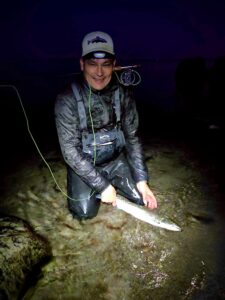
Foam bugs
Per Fischer, these days, spending his nights fishing for coastal sea trout, working on some foam flies (surface flies), which we hope to have made ready for next season.
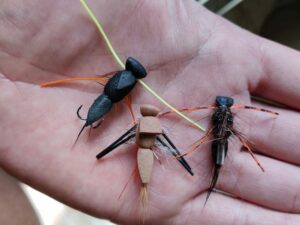

Is fluorocarbon line material necessary?
If you ask me as a sea angler fishing for tuna, mackerel and grey mullet, I would say yes! Fluorocarbon will get you more fish on the bank.
The tuna species and mullets are fish that see and avoid things like nylon, and in this way, they may also deter from taking your bait when you use nylon.
It is hard keeping up the spirit when river systems and areas where salmon and their relatives live are in dire straits. When giant river systems like the Tana River in Nothern Norway close down for commercial and recreational fishing because of a lack of fish, everyone gets worried, but when Local anglers that have lived for generations at the Tana River tell me about the great river, how in the past they also have seen years with very few fish, and how the locals suffered from starvation due to the lack of salmon runs I know that stocks of Atlantic salmon are fluctuating.
When some river systems are doing very well while the neighbouring river is doing poorly, climate changes make it hard to zoom in and find a solid explanation for such strange events.
One thing is true the salmonoid species is quite good at adapting to the places where it lives and is widespread across our planet.
The thought of how trout eggs brought down from European river systems decades ago to southern places like Argentina, Chile, and New Zealand have formed into healthy strains of fish populations in so many river systems (with different spawning cycles) is mind-boggling stuff.
A positive attitude as anglers, fish, and river conservationists must be the best way forward as we try to navigate through new evidence and scientific data that forms in the wake of the changing climate on mother earth.
Remember to bring your kids and grandkids fishing because it is only by sharing the dreamy and glorious moments at the river and ponds that new generations would want to conserve the fragile world of trout and salmon.

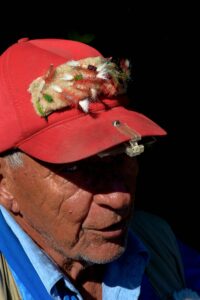
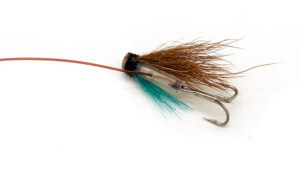 micro flies, riffling hitch and dry flies is popular among fly fishermen in North America, these types of flies are simply easier to trick salmon with than trying to deceive them with a traditional wet-fly fished below the surface
micro flies, riffling hitch and dry flies is popular among fly fishermen in North America, these types of flies are simply easier to trick salmon with than trying to deceive them with a traditional wet-fly fished below the surface
